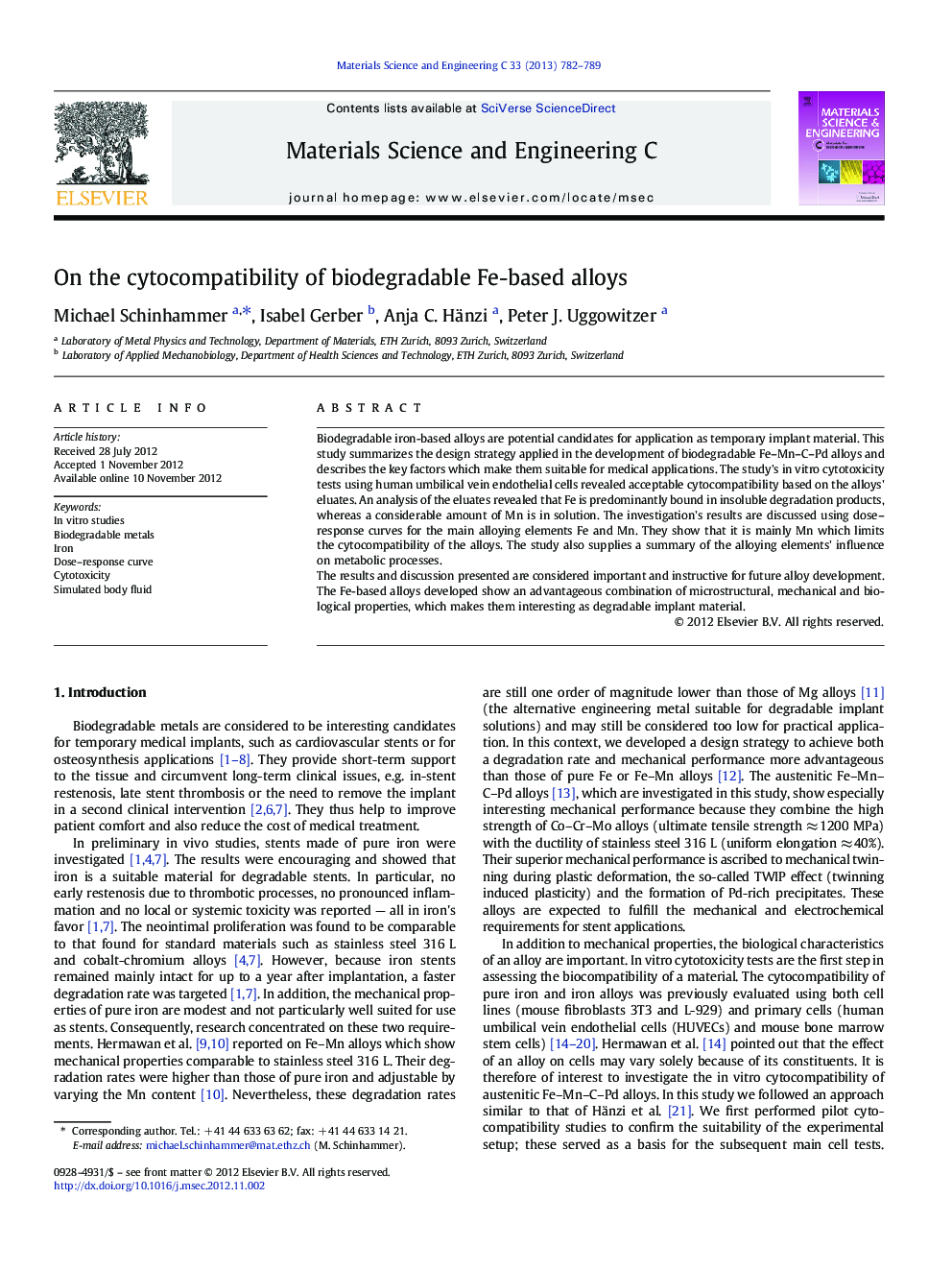| Article ID | Journal | Published Year | Pages | File Type |
|---|---|---|---|---|
| 1428882 | Materials Science and Engineering: C | 2013 | 8 Pages |
Biodegradable iron-based alloys are potential candidates for application as temporary implant material. This study summarizes the design strategy applied in the development of biodegradable Fe–Mn–C–Pd alloys and describes the key factors which make them suitable for medical applications. The study's in vitro cytotoxicity tests using human umbilical vein endothelial cells revealed acceptable cytocompatibility based on the alloys' eluates. An analysis of the eluates revealed that Fe is predominantly bound in insoluble degradation products, whereas a considerable amount of Mn is in solution. The investigation's results are discussed using dose–response curves for the main alloying elements Fe and Mn. They show that it is mainly Mn which limits the cytocompatibility of the alloys. The study also supplies a summary of the alloying elements' influence on metabolic processes.The results and discussion presented are considered important and instructive for future alloy development. The Fe-based alloys developed show an advantageous combination of microstructural, mechanical and biological properties, which makes them interesting as degradable implant material.
Graphical abstractFigure optionsDownload full-size imageDownload as PowerPoint slideHighlights► We investigate the cytocompatibility of biodegradable Fe–Mn–C(− Pd) alloys. ► In vitro cytotoxicity tests using HUVECs showed acceptable cytocompatibility. ► Mn ions released from the material is the main factor that limits the cytocompatibility. ► We discuss the alloying elements' influence on the metabolic processes.
